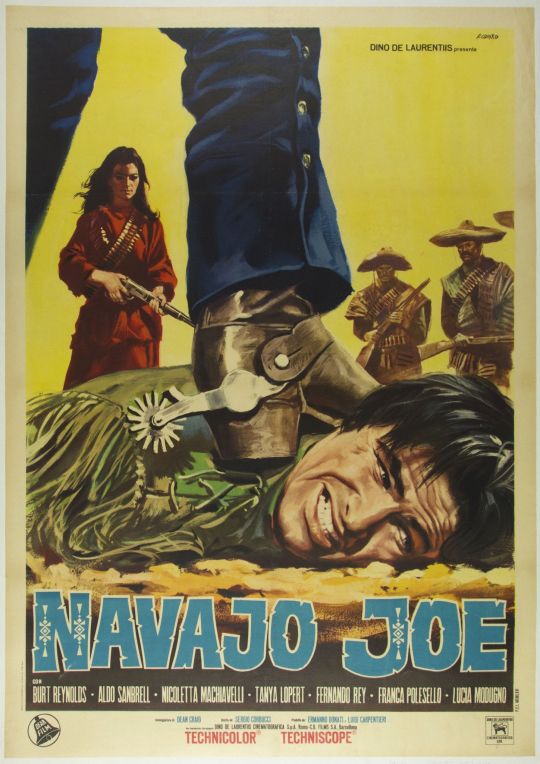#navajo joe
Text
The happiest of birthdays to the Maestro in the afterlife, Ennio Morricone!
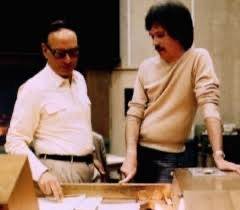









#ennio morricone#fistful of dollars#for a few dollars more#the good the bad and the ugly#once upon a time in the west#once upon a time in America#duck you sucker#the untouchables#the thing#the great silence#death rides a horse#the big Gundown#Navajo joe#the mission#the sicilian clan#movie composer#the goat#cinema paradiso#the hateful eight#the mercenary#Companeros#movie soundtracks
44 notes
·
View notes
Photo
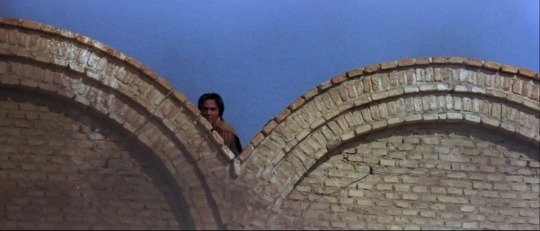
Burt Reynolds in “Navajo Joe” by Sergio Corbucci (1966) in Poblado El Paso.
7 notes
·
View notes
Photo





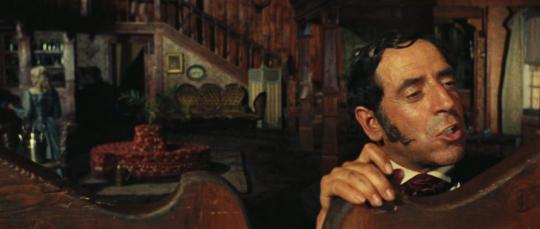

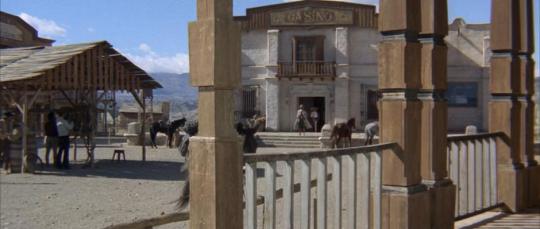

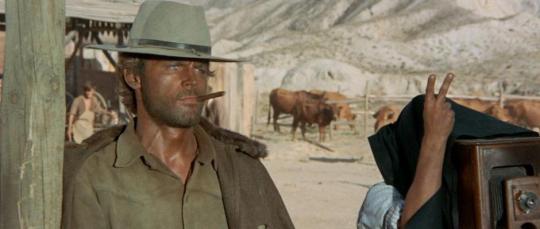
Popular Locations Wednesday
Tabernas’s Mini Hollywood
Constructed in 1965 for the film For a Few Dollars More and originally known as Yucca City, this desert film set was eventually purchased and converted into a tourist attraction with stunt shows, mock bank heists, and other traditional Old West amenities.
The set can be seen above in For a Few Dollars More, That Dirty Black Bag, Navajo Joe, The Good, the Bad and the Ugly, The Mercenary, Hannie Caulder, and Ace High.
It can also be found in 'Doc', A Reason to Live, a Reason to Die, Peacemaker, The Ruthless Four, Shanghai Joe, The Price of Death, and many more.
#mini hollywood#for a few dollars more#that dirty black bag#navajo joe#the good the bad and the ugly#the mercenary#hannie caulder#ace high#popular locations#tabernas#almería#spain
4 notes
·
View notes
Text
I saw this on quora and thought it was cool and wanted to share it on here. Its a long read but crazy. Its from Erik Painter

They did try. And they did capture Navajo men. However, they were unsuccessful in using them to decipher the code. The reason was simple. The Navajo Code was a code that used Navajo. It was not spoken Navajo. To a Navajo speaker, who had not learned the code, a Navajo Code talker sending a message sounds like a string of unconnected Navajo words with no grammar. It was incomprehensible. So, when the Japanese captured a Navajo man named Joe Kieyoomia in the Philippines, he could not really help them even though they tortured him. It was nonsense to him.
The Navajo Code had to be learned and memorized. It was designed to transmit a word by word or letter by letter exact English message. They did not just chat in Navajo. That could have been understood by a Navajo speaker, but more importantly translation is never, ever exact. It would not transmit precise messages. There were about 400 words in the Code.
The first 31 Navajo Marines created the Code with the help of one non-Navajo speaker officer who knew cryptography. The first part of the Code was made to transmit English letters. For each English letter there were three (or sometimes just two) English words that started with that letter and then they were translated into Navajo words. In this way English words could be spelled out with a substitution code. The alternate words were randomly switched around. So, for English B there were the Navajo words for Badger, Bear and Barrel. In Navajo that is: nahashchʼidí, shash, and tóshjeeh. Or the letter A was Red Ant, Axe, or Apple. In Navajo that is: wóláchííʼ, tsénił , or bilasáana. The English letter D was: bįįh=deer, and łééchąąʼí =dog, and chʼįįdii= bad spiritual substance (devil).
For the letter substitution part of the Code the word “bad” could be spelled out a number of ways. To a regular Navajo speaker it would sound like: “Bear, Apple, Dog”. Or other times it could be “ Barrel, Red Ant, Bad Spirit (devil)”. Other times it could be “Badger, Axe, Deer”. As you can see, for just this short English word, “bad” there are many possibilities and to the combination of words used. To a Navajo speaker, all versions are nonsense. It gets worse for a Navajo speaker because normal Navajo conjugates in complex ways (ways an English or Japanese speaker would never dream of). These lists of words have no indicators of how they are connected. It is utterly non-grammatical.
Then to speed it up, and make it even harder to break, they substituted Navajo words for common military words that were often used in short military messages. None were just translations. A few you could figure out. For example, a Lieutenant was “one silver bar” in Navajo. A Major was “Gold Oak Leaf” n Navajo. Other things were less obvious like a Battleship was the word for Whale in Navajo. A Mine Sweeper was the Navajo word for Beaver.
A note here as it seems hard for some people to get this. Navajo is a modern and living language. There are, and were, perfectly useful Navajo words for submarines and battleships and tanks. They did not “make up words because they had no words for modern things”. This is an incorrect story that gets around in the media. There had been Navajo in the military before WWII. The Navajo language is different and perhaps more flexible than English. It is easy to generate new words. They borrow very few words and have words for any modern thing you can imagine. The words for telephone, or train, or nuclear power are all made from Navajo stem roots.
Because the Navajo Marines had memorized the Code there was no code book to capture. There was no machine to capture either. They could transmit it over open radio waves. They could decode it in a few minutes as opposed to the 30 minutes to two hours that other code systems at the time took. And, no Navajo speaker who had not learned the Code could make any sense out of it.
The Japanese had no published texts on Navajo. There was no internationally available description of the language. The Germans had not studied it at the time. The Japanese did suspect it was Navajo. Linguists thought it was in the Athabaskan language family. That would be pretty clear to a linguist. And Navajo had the biggest group of speakers of any Athabaskan language. That is why they tortured Joe Kieyoomia. But, he could not make sense of it. It was just a list of words with no grammar and no meaning.
For Japanese, even writing the language down from the radio broadcasts would be very hard. It has lots of sounds that are not in Japanese or in English. It is hard to tell where some words end or start because the glottal stop is a common consonant. Frequency analysis would have been hard because they did not use a single word for each letter. And some words stood for words instead of for a letter. The task of breaking it was very hard.
Here is an example of a coded message:
béésh łigai naaki joogii gini dibé tsénił áchį́į́h bee ąą ńdítį́hí joogi béésh łóó’ dóó łóóʼtsoh
When translated directly from Navajo into English it is:
“SILVER TWO BLUE JAY CHICKEN HAWK SHEEP AXE NOSE KEY BLUE JAY IRON FISH AND WHALE. “
You can see why a Navajo who did not know the Code would not be able to do much with that. The message above means: “CAPTAIN, THE DIVE BOMBER SANK THE SUBMARINE AND BATTLESHIP.”
“Two silver bars” =captain. Blue jay= the. Chicken hawk= dive bomber. Iron fish = sub. Whale= battleship. “Sheep, Axe Nose Key”=sank. The only normal use of a Navajo word is the word for “and” which is “dóó ”. For the same message the word “sank” would be spelled out another way on a different day. For example, it could be: “snake, apple, needle, kettle”.
Here, below on the video, is a verbal example of how the code sounded. The code sent below sounded to a Navajo speaker who did not know the Code like this: “sheep eyes nose deer destroy tea mouse turkey onion sick horse 362 bear”. To a trained Code Talker, he would write down: “Send demolition team to hill 362 B”. The Navajo Marine Coder Talker then would give it to someone to take the message to the proper person. It only takes a minute or so to code and decode.
youtube
31K notes
·
View notes
Text

Baroness vs Scarlett Commission
#gi joe baroness#gi joe comics#gi joe scarlett#g i joe#gi joe#snake eyes#cobra#gi joe toys#commission#alberto navajo#illustration#comic art#janf#government issue#joe#hasbro#missile#cobra command#cobra commander#larry hama#anastasia cisarovna#femme fatale#gi joe a real american hero#shana o'hara#agent scarlett#baroness#scarlett
67 notes
·
View notes
Photo

Forty years ago, President Ronald Reagan designated August 14th as Navajo Code Talkers Day in honor of the services contributed by the Navajo Code Talkers during World War II.
Navajo is a spoken language handed down orally from generation to generation. The Code talkers created a system of native words to represent characters of the English alphabet, so that they could spell out English words with no Navajo equivalent. They also assigned their own expressions, like iron-fish to mean submarine, for over 400 important military terms. Their codes were never cracked by the enemy.
This Navajo Code Talker G.I. Joe can say seven phrases in both Navajo and English, and also came with a list of 200 phrases used by the Navajo Code Talkers.
17 notes
·
View notes
Photo
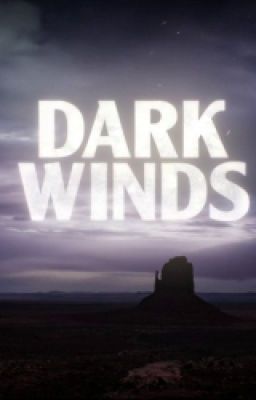
Deputy Ali's Dark Winds story (on Wattpad) https://www.wattpad.com/story/332649688-deputy-ali%27s-dark-winds-story?utm_source=web&utm_medium=tumblr&utm_content=share_myworks&wp_uname=blackkat26&wp_originator=35mrg%2FFI76deEyD4tFrzeFaq8LKIPOEhWjl9E5O%2Foy6bAHw8j8GxikvL47Q8n%2FBVDbifRRRoaAqWPQkQ0RptBODbtiS9JvUYT669jxmSAoY30GQUsuST8R9Cjz9n5PTJ Hi people. The Names Ali, I just thought I'd tell you a little bit about my story. Disclaimer: I do not own any character's Except my original OC. All rights go to the Book author: Tony Hillerman T.V.: Graham Roland, & AMC.
#1970s#burnadette#chee#crime#darkwinds#emma#guns#jim#joe#leaphorn#manuelito#native#navajo#police#spiritual#books#wattpad#amwriting#dark winds#jimchee#kiowa gordon#zahn mcclarnon#jessica matten
0 notes
Text

According to the Navajo mythology, the Shiprock is quite similar to the giant bird that once carried the Navajo from the cold northlands to the Four Corners region.
📸 Photo by Joe Shively via Instagram
Source: When In New Mexico
176 notes
·
View notes
Text
Millions of U.S. apples were almost left to rot. Now, they'll go to hungry families
NOVEMBER 27, 2023 By Alan Jinich
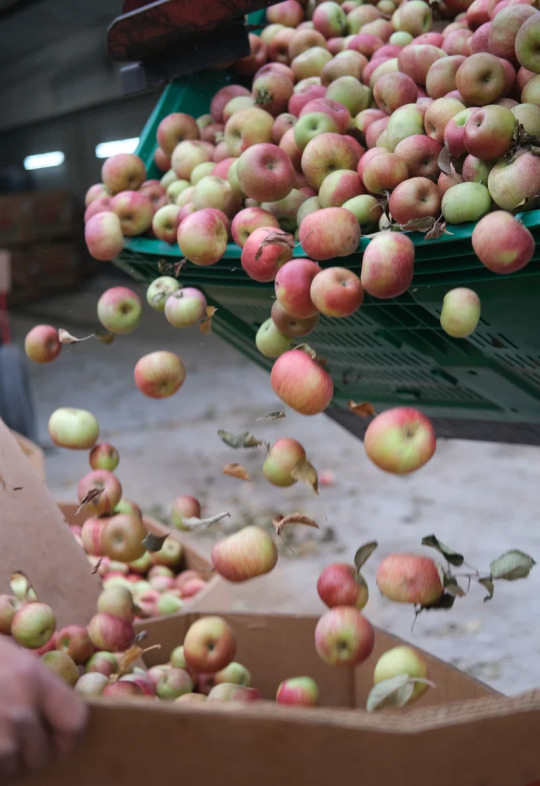
It's getting late in the harvest season in Berkeley County, West Virginia and Carla Kitchen's team is in the process of hand-picking nearly half a million pounds of apples. In a normal year, Kitchen would sell to processors like Andros that make applesauce, concentrate, and other products. But this year they turned her away.
...
Across the country, growers were left without a market. Due to an oversupply carried over from last year's harvest, growers were faced with a game-time economic decision: Should they pay the labor to harvest, crossing their fingers for a buyer to come along, or simply leave the apples to rot?

Bumper crops, export declines and the weather have contributed to the apple crisis
...
While many growers in neighboring states like Maryland and Virginia left their apples to drop. Sen. Joe Manchin of West Virginia was able to convince the United States Department of Agriculture (USDA) to pay for the apples produced by growers in his state, which only makes up 1% of the national market.
A relief program in West Virginia donated its surplus apples to hunger-fighting charities
This apple relief program, covered under Section 32 of the Agricultural Adjustment Act of 1935, purchased $10 million worth of apples from a dozen West Virginia growers. Those apples were then donated to hunger-fighting charities across the country from South Carolina and Michigan all the way out to The Navajo Nation.
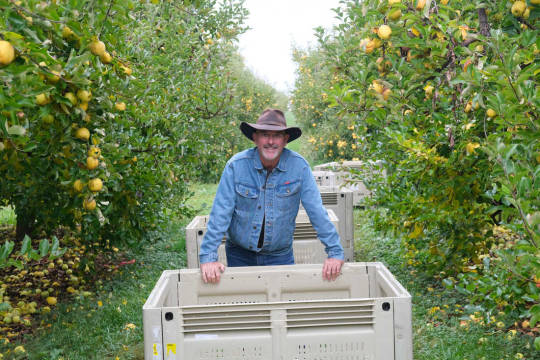
Mike Meyer, head of advocacy at The Farmlink Project, says it's the largest food rescue they've ever done and they hope it can serve as a model for their future missions.
"There's over 100 billion pounds of produce waste in this country every year; we only need seven billion to drive food insecurity to zero," Meyer says. "We're very happy to have this opportunity. We get to support farmers, we get to fight hunger with an apple. It's one of the most nutritional items we can get into the hands of the food insecure."
At Timber Ridge Fruit Farm in Virginia, owners Cordell and Kim Watt watch a truck from The Farmlink Project load up on their apples before driving out to a food pantry in Bethesda, Md. Despite being headquartered in Virginia, Timber Ridge was able to participate in the apple rescue since they own orchards in West Virginia as well. Cordell is a third-generation grower here and he says they've never had to deal with a surplus this large.
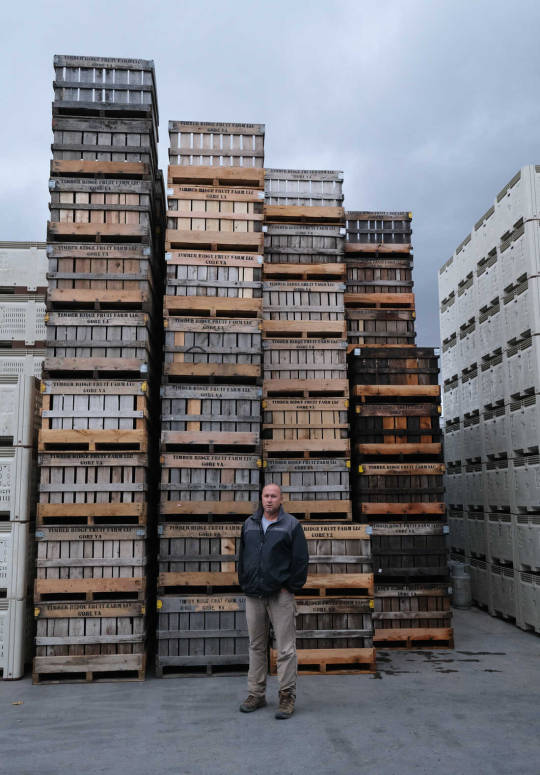
At the So What Else food pantry in Bethesda, Md., apple pallets from Timber Ridge fill the warehouse up to the ceiling. Emanuel Ibanez and other volunteers are picking through the crates, bagging fresh apples into family-sized loads.
"I'm just bewildered," Ibanez says. "We have a warehouse full of apples and I can barely walk through it."
"People in need got nutritious food out of this program. And that's the most important thing"
Executive director Megan Joe says this is the largest shipment of produce they've ever distributed – 10 truckloads over the span of three weeks. The food pantry typically serves 6,000 families, but this shipment has reached a much wider circle.
"My coworkers are like, 'Megan, do we really need this many?' And I'm like, yes!" Joe says. "The growing prices in the grocery stores are really tough for a lot of families. And it's honestly gotten worse since COVID."

"It's the first time we've done this type of program, but we believe it can set the stage for the region," Kent Leonhardt, West Virginia's commissioner of agriculture says. "People in need got nutritious food out of this program. And that's the most important thing."
Following West Virginia's rescue program, the USDA announced an additional $100 million purchase to relieve the apple surplus in other states around the country. This is the largest government buy of apples and apple products to date. But with the harvest window coming to an end, many growers have already left their apples to drop and rot.
191 notes
·
View notes
Text
The happiest of birthdays in the afterlife to one of the greatest to ever do it, Sergio Corbucci! If he only made The Great Silence, that would have been enough, but we got The Mercenary, Django, Companeros and so many others!

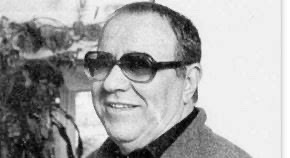

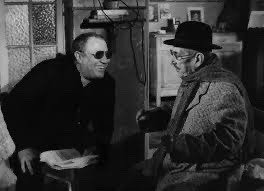

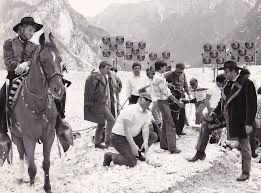
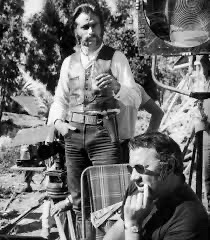
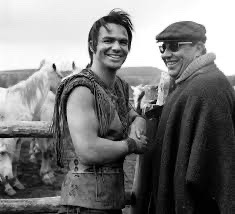

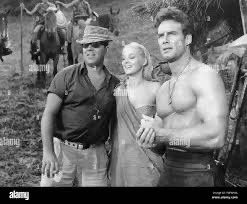
#sergio corbucci#the great silence#django#odds and evens#Django and Django#the specialists#the mercenary#Companeros#Ringo and his golden pistol#super fuzz#spaghetti western#filmmaker#Navajo Joe
3 notes
·
View notes
Photo

“Navajo Joe” by Sergio Corbucci (1966) in Poblado El Paso, the bank has been robbed regularly since 1965! #Almeria #Western #Cinema
3 notes
·
View notes
Text
Week of December 5–11
—Film—
Navajo Joe
Rum Runners
Stop Over in Hell
0 notes
Text

Bucket of Blood Street is located off U.S. Route 66 in the Old Downtown district of Holbrook, Arizona. Bucket of Blood Street is one block south of the historical Santa Fe Railroad station on Navajo Road that was built in 1882. Holbrook was founded in the 1880s as a railroad stop. At the time, the desert town was mainly populated by ranchers, outlaws, cowboys and cattle rustlers, and was known for its gun fights. Holbrook had a reputation as a "town too tough for women and churches".
Terrell's Cottage Saloon had existed on the street for years before coming to be known as Bucket of Blood Saloon, after a violent fight took place resulting in the death of two men. The saloon was popular with cowboys and ruffians; fistfights and gunfights often broke out there. The year 1886 was a particularly violent one and the town lost about ten percent of its population. A fight broke out at the saloon during a card game between rival cattle rustlers, including wranglers from the Hashknife Outfit of the Aztec Land and Cattle Company. The result of the fight was described as though a bucket of blood had been spilled on the floor.
A newspaper account describes another event on January 19, 1896, when the proprietor of the saloon shot and killed two men playing cards: "Suddenly a dispute arose and angry words passed between them." The manager of the saloon, Harry Donnelly, used a revolver to force another man, George C. Hiatt, a barber, into the street and shot him "through the heart" in front of the town drug store. Donnelly was arrested by Deputy Sheriff Hofford who was acting as the county sheriff, as Commodore Perry Owens was out of town at the time. The newspaper report claims that when the widow Hiatt heard the news she fell "lifeless to the floor". The saloon was owned at the time by F. J. Wattron, however Donnelly managed it.
Albert F. Potter's memoir, written around 1888, describes the events leading to the name Bucket of Blood somewhat differently. He wrote of participating in a "roundup on the Little Colorado River range … 12 miles east of Holbrook." At sunrise two horsemen were seen riding towards his party from the direction of Holbrook. One man shouted, "Here we come! All shot to pieces." The head of the other man was wrapped in bloody bandages covering a serious wound. Potter went on to write: "We recognized them as Joe Crawford, a cowboy who had worked for the Aztec Land and Cattle Company known as the Hashknife Outfit, and George Bell, a gambler. Crawford was so weak [from his wounds] that he had to be lifted from the horse he was riding. We laid him on the horse wrangler's bed and with a handful of flour from the cook's bread pan I plastered the wound on his head and stopped the bleeding. Examination showed that a bullet had also passed through the cuff of his shirt and coat sleeve, and just grazed the side of his body. Scars of other old wounds showed that this was not Crawford's first fight."
Potter then describes Bell's involvement in an incident during a card game with a man named Ramon Lopez, during which Lopez struck Crawford in the head with his six-shooter gun. Crawford retaliated by drawing his gun and killing Lopez. Shooting then broke out in the saloon, and Crawford killed another man, after which "Crawford and Bell then made their getaway". Potter went on to write that he believed Joe Crawford "was in fact Grat Dalton, a member of the notorious Dalton Gang of outlaws who was later killed during an attempted bank robbery at Coffeyville, Kansas". Potter concluded that this was the backstory to the naming of Bucket of Blood Saloon.
Read more
#wikipedia#weird facts#weird history#strange facts#strange history#random fact#weird wikipedia#wikiweird#history
43 notes
·
View notes
Text

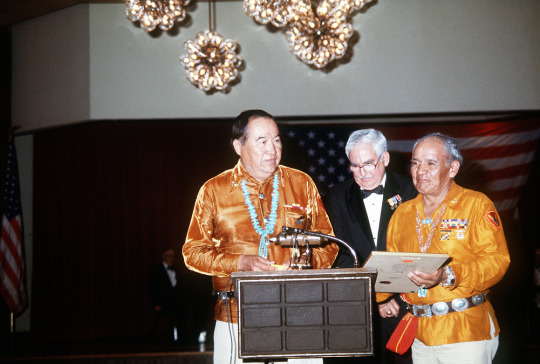
President of the Navajo Code Talkers, left, Joe Garza; ceremony chairman, center, and the vice-president of the Code Talkers present a copy of the Navajo Code Talkers Marine Corps hymn, on February 20, 1988.
Record Group 330: Records of the Office of the Secretary of Defense
Series: Combined Military Service Digital Photographic Files
Image description: Three men standing at a podium. Two of the men are wearing orange uniform shirts with military decorations, khaki pants, and silver and turquoise necklaces and belts. One holds a plaque. The third man is wearing a black jacket with medals, white shirt, and black bow tie. In the background is an American flag.
Image description: Uncropped version of previous photo, with large distracting light fixture or decoration above the three men.
#archivesgov#February 20#1988#1980s#Navajo Code Talkers#USMC#U.S. Marine Corps#military#Native American history#American Indian history#Indigenous American history#Navajo#World War II#WWII
82 notes
·
View notes
Text

🇺🇲 🚨 NATIVE AMERICAN NAVAJO TRIBE ALARMED BY U.S. SPENDING ON FOREIGN AID
The Native American Navajo Tribe, the largest tribe to survive the genocide of native Americans, are deeply alarmed by U.S. plans to spend billions on Foreign Aid, while local tribes only receive a small fraction of that amount, according Justin Ahastin, Executive Director of the Washington office of the Navajo Nation Reservation, speaking to Russia's Ria Novosti.
“It is deeply troubling to see the federal government promising billions of dollars to foreign countries in the name of national security while the 574 tribes within its own borders receive a fraction of that support,” the Navajo Executive Director said, commenting on U.S. President Joe Biden's request for National Security assistance to Ukraine.
Ahastin focused on the enduring legacy of injustices targeting the native population of the U.S., including forced relocations and generations of exploitation.
“Today, the legacy of these injustices is evident in significant health disparities among our people, with cancer being the second leading cause of death on the Navajo Nation,” he told reporters.
Ahastin also emphasized the tribes disappointment that compensation amendments, which he called a necessary step in addressing long-standing health problems and societal disparities for the Navajo Nation and other tribes in the United States, and were later removed from the Defense Budget.
"Plus, the inadequate provision of basic services such as health care, education and infrastructure on tribal lands is a critical concern. Federal funding and resources are often insufficient or unavailable due to bureaucratic red tape, leaving many people without access to natural services," added the reservation representative, criticizing the “marginalized” position of the Navajos in policy decisions made by the US authorities.
#source
@WorkerSolidarityNews
#united states#us defense budget#navajo nation#navajo#native americans#americans#us news#us politics#news#politics#geopolitics#world news#global news#international news#breaking news#current events#us military#us foreign aid#foreign aid#ukraine#israel#us spending#defense spending#politics news#native american#native american news#indigenous americans#war news#war spending
8 notes
·
View notes
